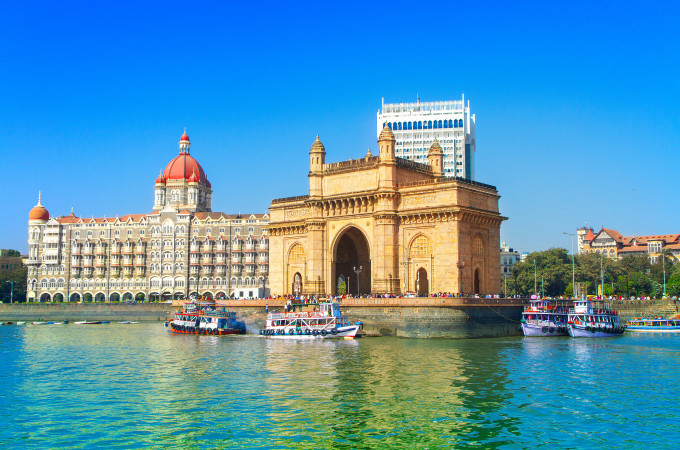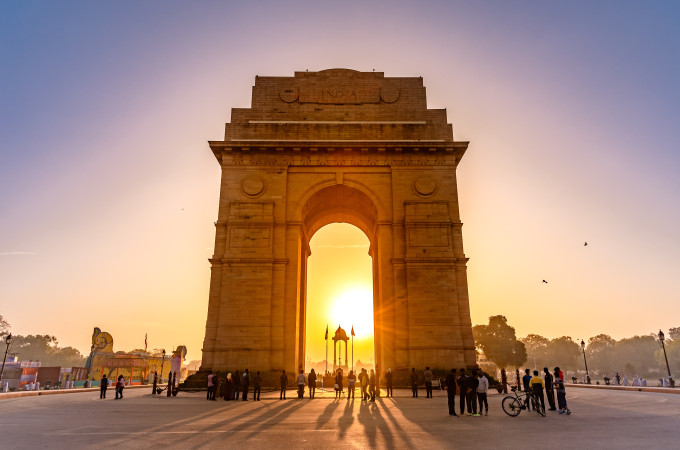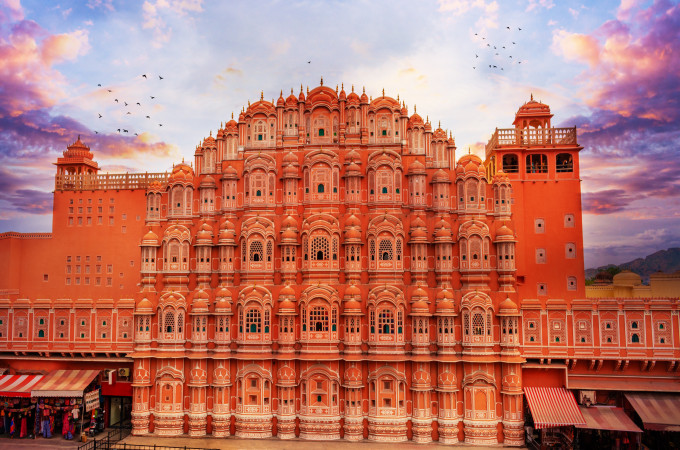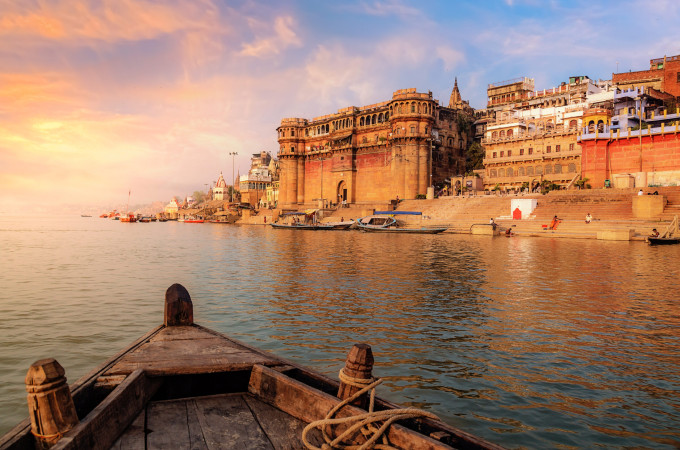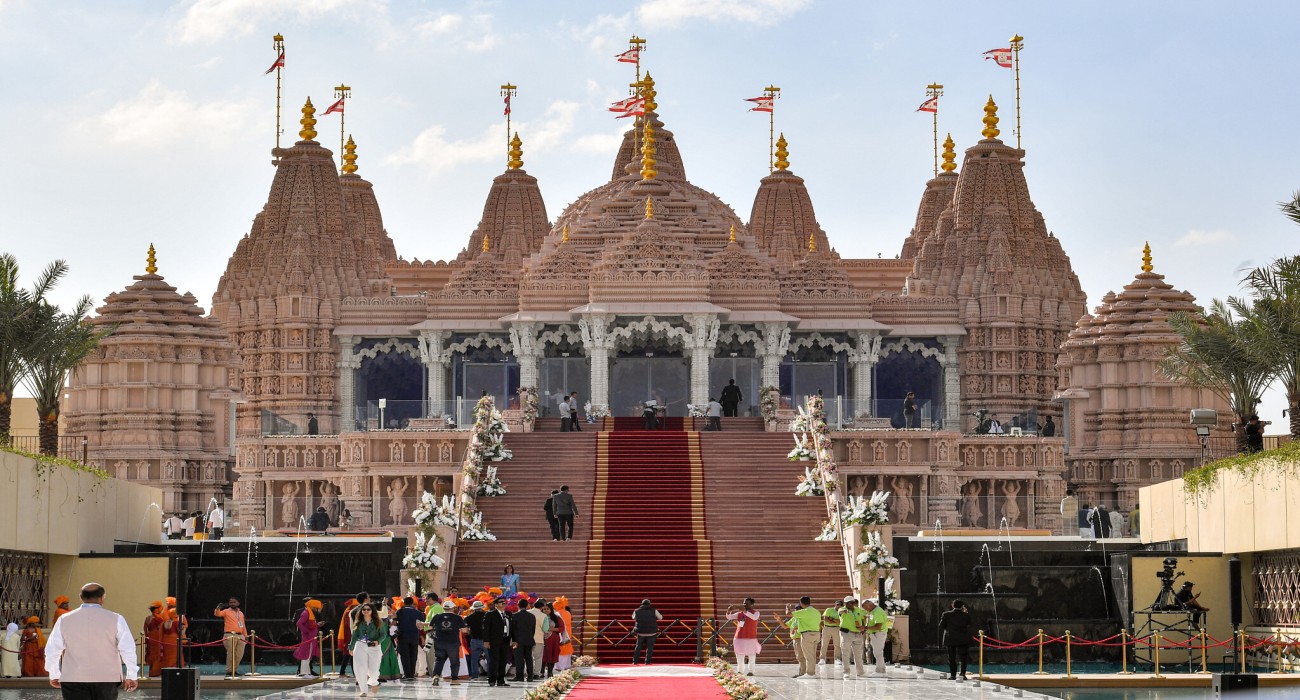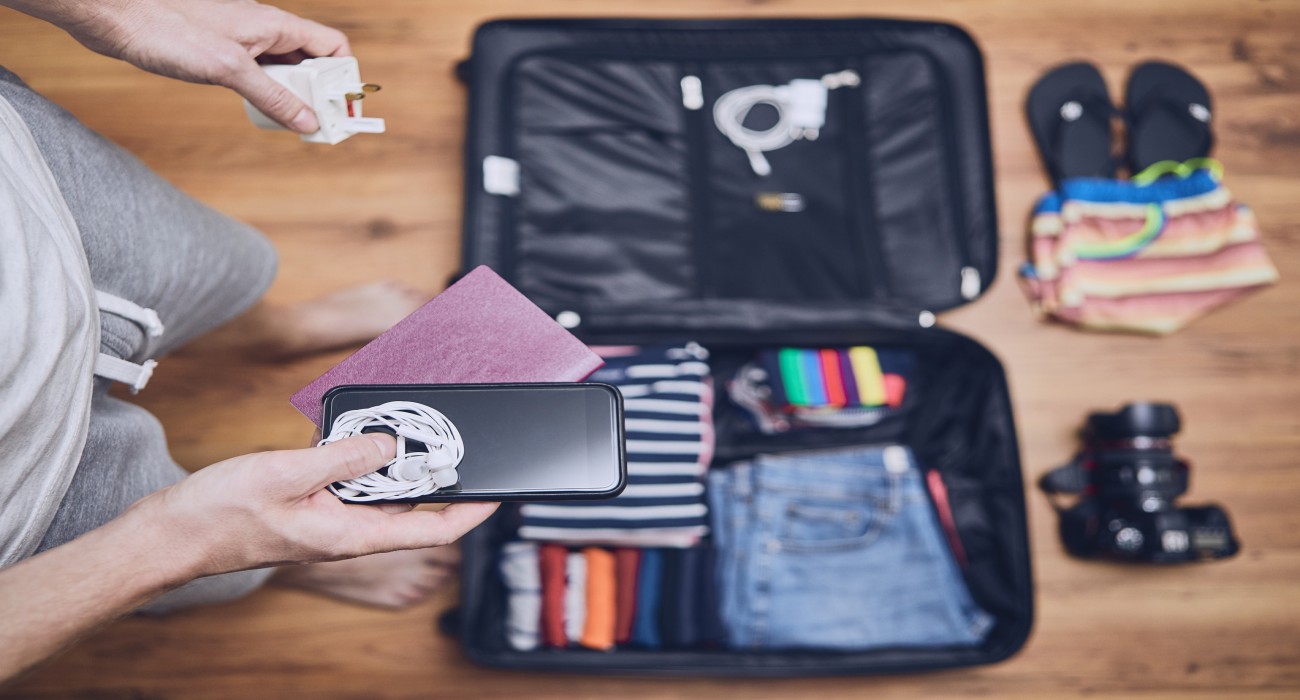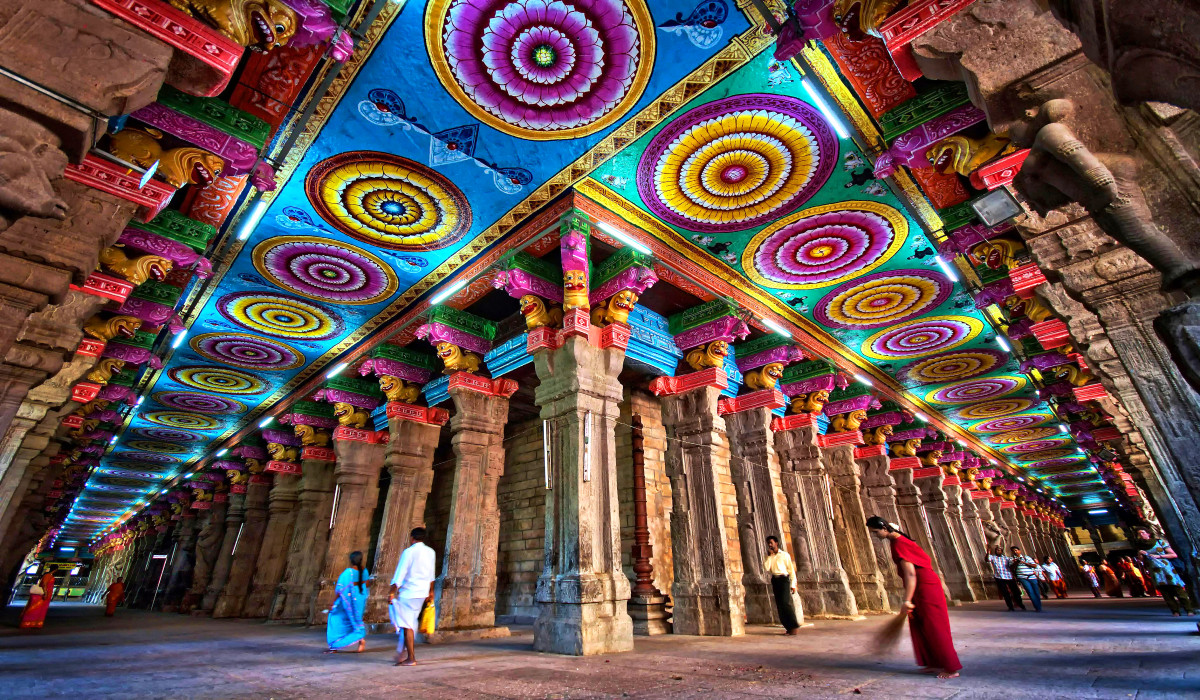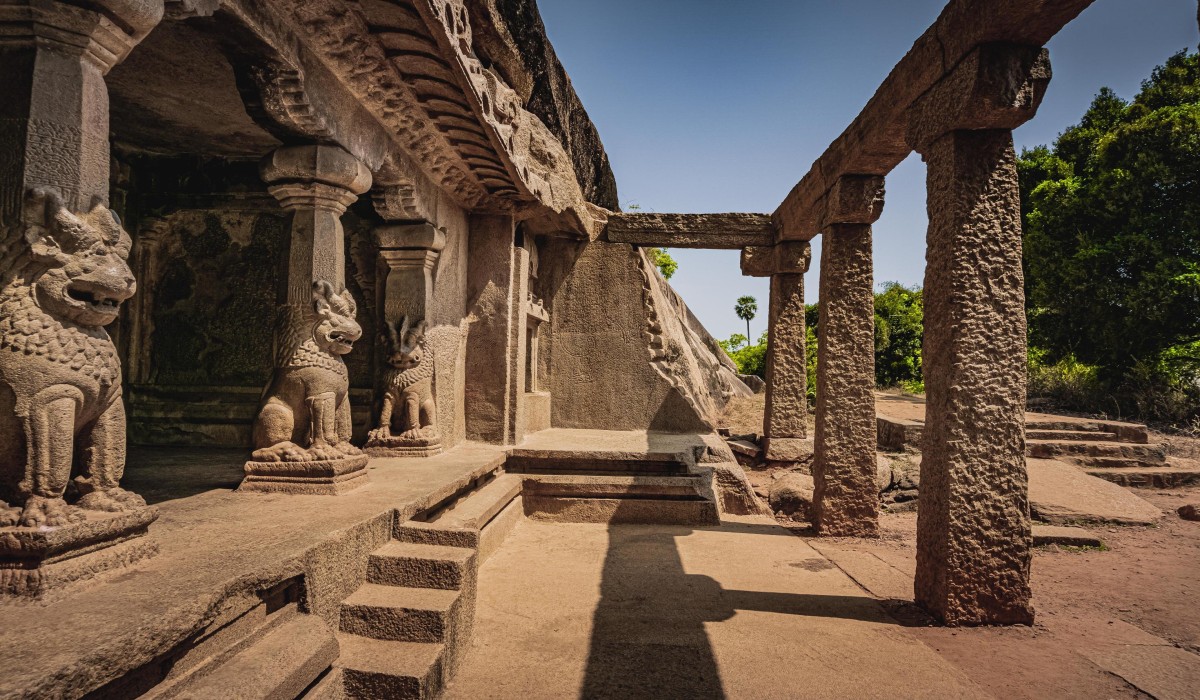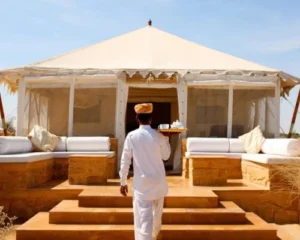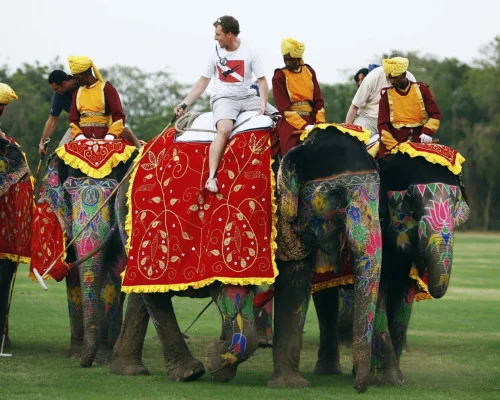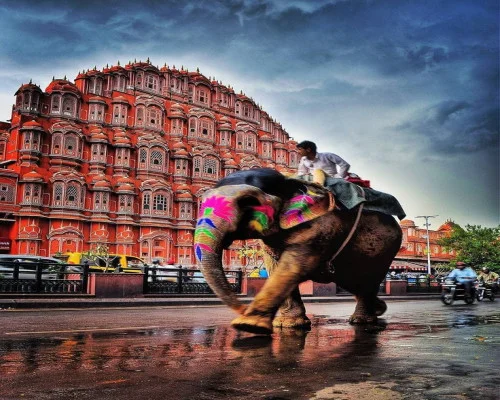A visit to India isn’t complete unless you visit at least a few of its temples to immerse yourself in the religious odyssey of this breathtaking country.
When visiting any of these revered sites, you must approach them with respect and mindfulness, including following certain dress codes and appropriate etiquette. Adhering to these established traditional norms not only shows your respect towards the country and its culture but also enriches your experience.
From removing your footwear and leather items to covering your shoulders and knees, each practice holds a symbolic significance.
Here is an in-depth guide to visiting Hindu temples, including what to wear, what to offer to the deities, and how to conduct yourself within the sacred ground.
Contents
- 1. Remove your footwear
- 2. Cover your shoulder and knees
- 3. Make offerings
- 4. Be mindful
- 5. Avoid leather
- 6. Don’t take photos and videos
- 7. Follow the flow
- 8. Respect the queue
- 9. Accept blessings respectfully
- 10. Pay respects
- 11. Other things to consider
- Why is it necessary to remove footwear before entering a temple?
- What offerings are appropriate to bring to a Hindu temple?
- Can you wear black to a Hindu temple?
- Are jeans allowed in a temple?
- What can I wear in Pooja?
1. Remove your footwear
The first thing you notice outside the temple complex anywhere in India are uncountable shoe racks. This is because it is imperative to remove your footwear while entering the holy grounds of a Hindu temple. It’s not only a sign of respect and modesty towards the deities and the sacred space but it also helps in keeping the area devoid of impurities and dirt.
2. Cover your shoulder and knees
Dressing appropriately is perhaps the second-most important factor when entering the temple. For men, an acceptable dress code will be kurta-pajama, dhoti, or pants and a shirt/t-shirt in pastel shades. Women’s clothes include the traditional saree or salwar kameez. Women can also wear long skirts or long dresses as long as they are not revealing. If you are not sure, carry a shawl to cover up if necessary. Certain temples, especially Gurudwaras, require you to cover your head when inside the premises.
The important thing to remember is to avoid show of skin, covered shoulders & trousers/skirts should be covering your knees.
3. Make offerings
Almost every Hindu temple will have some street stalls selling garlands, incense sticks, and even fruits and sweets lined up outside. But, if you are uncertain, you can bring some with you as offerings. Use both hands while offering them to the deities or the priest in charge. Most temples also have donation boxes. While donating money is not compulsory, your contribution can help in maintaining and managing the temple.
4. Be mindful
Speak only if and when necessary within a temple, and when you do, keep your voice down and mind your language. Also, pointing or gesturing toward statues of deities is highly frowned upon. If you are visiting with children, accompany them at all times so they don’t wander around or cause disturbance to other worshippers.
5. Avoid leather
Although this is specific to certain temples, leather accessories, including belts, bags, and wallets should not be worn to a Hindu temple. Cows are highly venerated beings according to Hindu culture. Some temples have strict prohibitions against such items. To be safe, don’t wear any such items to a temple.
6. Don’t take photos and videos
While the ornate carvings and elaborate customs may be very tempting to capture, always check the temple’s policy on photography and videography. Many temples have clear instructions for camera usage, and some allow photography outside the inner sanctum. When in doubt, check with a priest or temple staff.
7. Follow the flow
Most temples have defined entry and exits and worshippers move clockwise around the divinities, a concept also known as parikrama. Believers usually use this time to chant or reflect quietly. Be observant and follow suit to avoid disruptions.
8. Respect the queue
While smaller temples are easier to visit and navigate, more prominent ones usually have a massive influx on days of religious importance, for example, Hanuman temples on Tuesdays and Saturdays and Shiva temples on Mondays. When visiting the temple on such days, wait patiently in queue for your turn to approach the Gods and participate in rituals.
9. Accept blessings respectfully
A common sight at a Hindu temple, especially after the priest performs a Pooja, is the distribution of fruits and sweets as prasad or blessings. Place your right palm on top of your left while accepting the blessing. You can either eat it or pass it on but don’t throw it as it is considered a sign of disrespect.
10. Pay respects
While you may be visiting for a cultural experience, temples are places of religious importance. While bowing down and touching the head to the ground is how most Hindus pay homage, but you can simply hold your hands with palms together in a ‘namaste’ posture to be respectful.
11. Other things to consider
While the above tips cover most of the common temple etiquette while visiting a Hindu temple, there are some other suggestions to follow too:
- Avoid wearing black to the temple as black is considered a color of mourning and is generally avoided at auspicious places.
- Consuming alcohol or any toxic substances within or outside a temple complex is an absolute no. Also, do not visit a temple under any sort of substance influence.
- Although it is not mandatory, Hindus always take a bath and wear clean clothes before visiting a temple. It is advisable to do the same, or at least wear fresh, clean clothes
- Put your mobile devices on silent mode. While some temples put out signage strictly saying so, you should do it either way as a sign of respect.
- Traditionally, menstruating women are advised not to participate in religious ceremonies or visit sites of religious significance. However, given the changing views, customs vary by region and temple.
- Be culturally aware. When confused, politely consult the priest, a temple staff, or your accompanying Indian friend.
- Some temples have specific timings, specifically early mornings and evenings. Check timings before visiting.
- While it’s not obvious and not even a strict requirement, avoid loud colors and accessories. Wear modest attire that covers you properly and isn’t inappropriate.
Frequently asked questions
Why is it necessary to remove footwear before entering a temple?
Shoes are considered dirty as they gather dust and impurities. Removing footwear before entering a Hindu temple is the utmost sign of respect towards the holy grounds and the presiding deity, and they also help in keeping the area clean.
What offerings are appropriate to bring to a Hindu temple?
For most Hindu temples, offerings such as garlands and loose flowers, incense sticks, sweets, fruits such as coconuts, and diyas (oil lamps) are considered appropriate. Avoid bringing non-vegetarian food items and alcoholic beverages, unless you visit a Kali temple or Kal Bhairav temple. However, it is best to know the customs at these temples before your visit.
Can you wear black to a Hindu temple?
While there are no strict prohibitions or rules against wearing black, note that black is a sign of mourning according to Hinduism and is not traditionally worn to places of religious importance.
Are jeans allowed in a temple?
Much like the color black, there is no rule set in stone against wearing jeans to a Hindu temple. However, you must dress modestly and respectfully while visiting any revered places. So, it is best to avoid short denim skirts and shorts, ripped jeans, and other revealing clothing items to show respect.
What can I wear in Pooja?
Much like Hindu temples, you must dress modestly for a Pooja. Most men wear kurta-pajamas or dhotis while women wear sarees and salwar kameez. Wear clean, conservative clothes and ensure they cover your shoulders and knees. It may also be a good idea to avoid loud colors and patterns and stick to neutral and pastel shades unless it’s a Diwali Pooja. For Diwali, it is common to see Hindus dress up in bright colors but they still should be respectful.
 Skip to main content
Skip to footer
Skip to main content
Skip to footer
